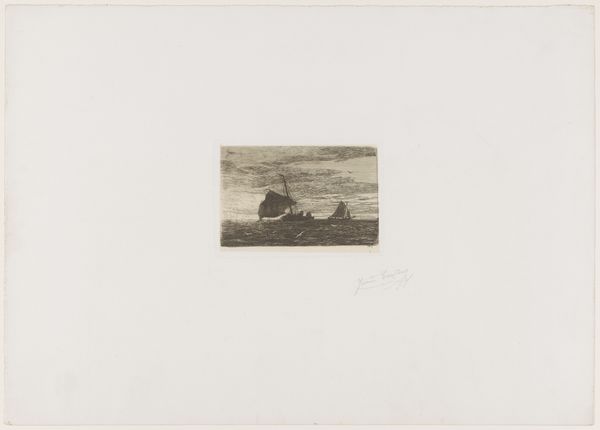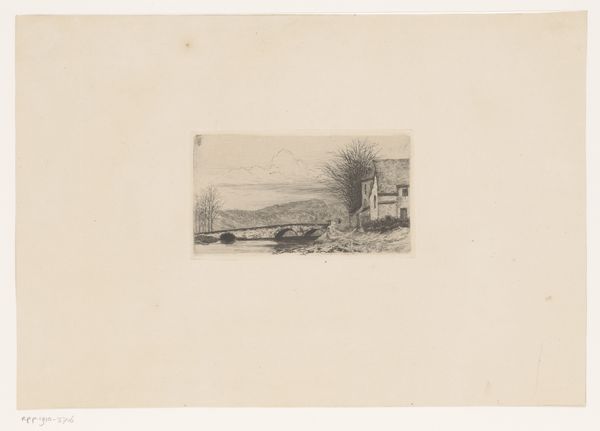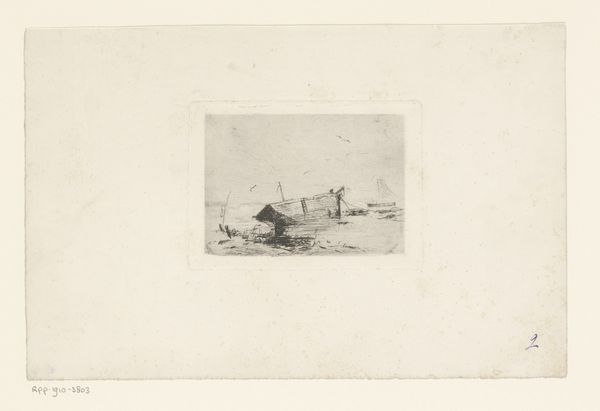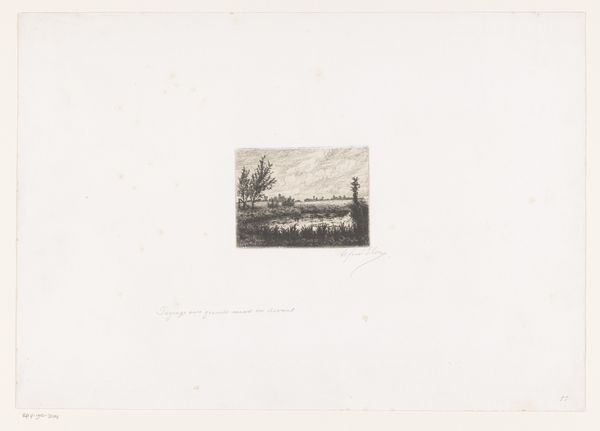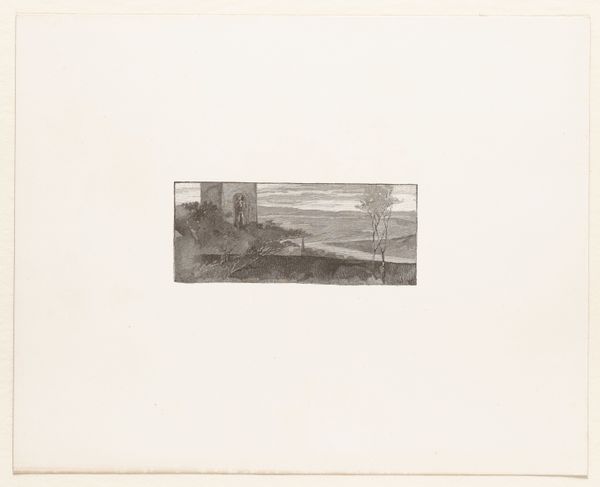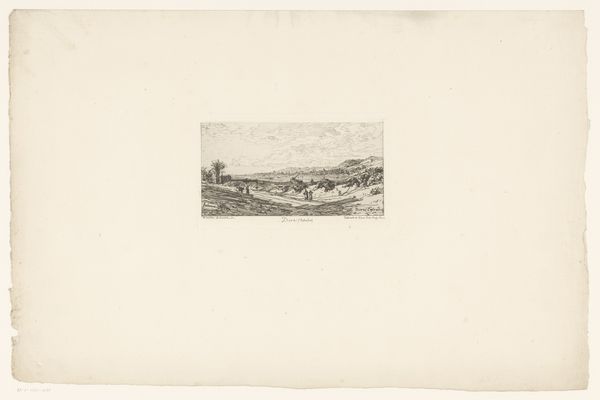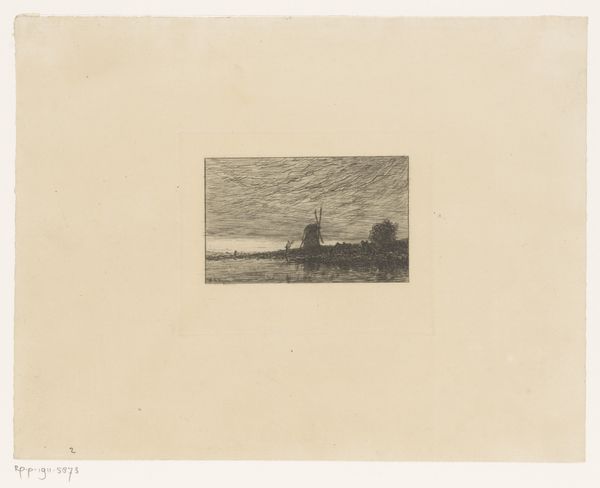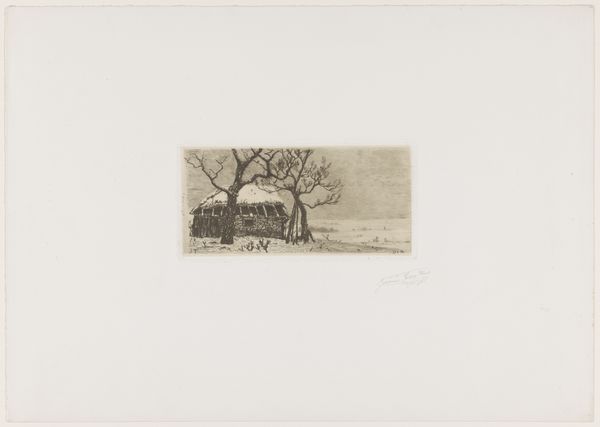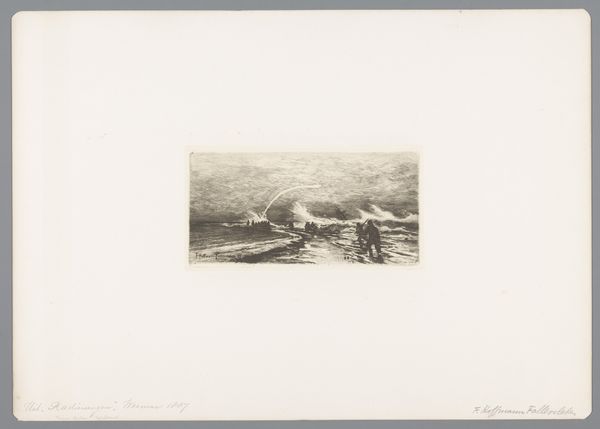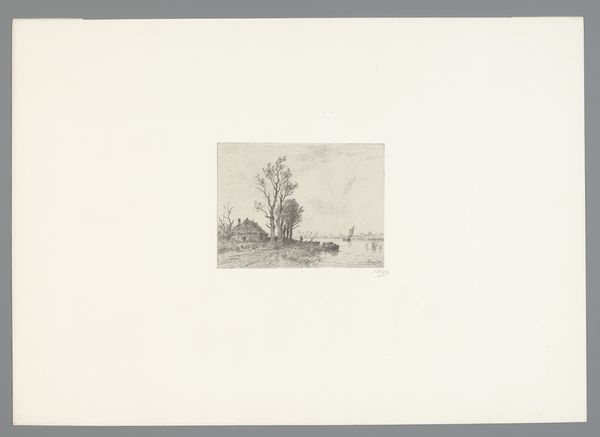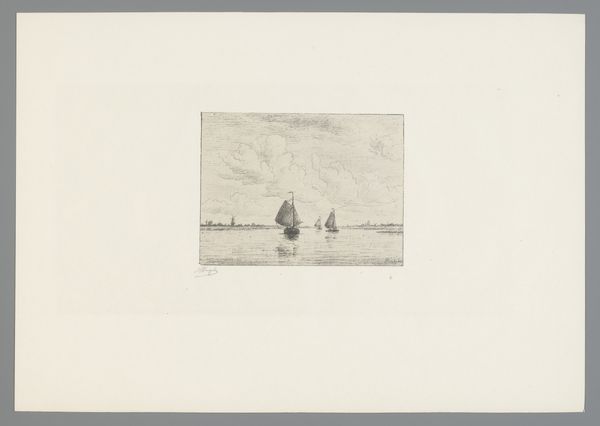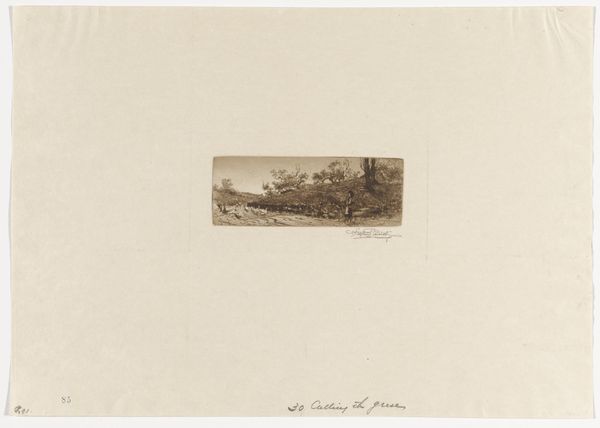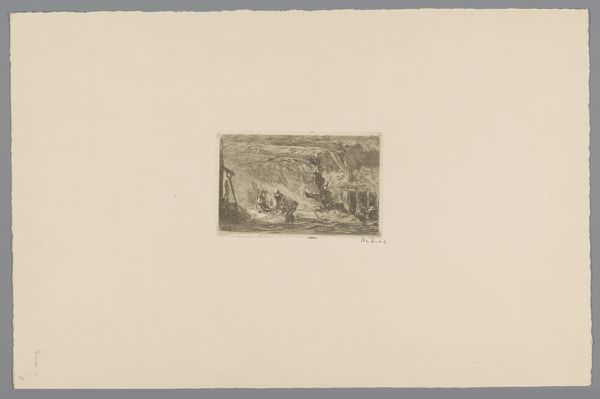
print, etching, intaglio
#
dutch-golden-age
# print
#
etching
#
intaglio
#
landscape
#
realism
Dimensions: height 99 mm, width 160 mm
Copyright: Rijks Museum: Open Domain
Curator: I find myself immediately drawn to the brooding, almost melancholic atmosphere. The tight hatching in the sky presses down on the scene, dwarfing the windmill and buildings. Editor: Indeed. What we have here is "Molen en enkele huizen", or "Mill and Some Houses," by Albert Dillens, an etching done sometime between 1854 and 1909, now housed at the Rijksmuseum. The intimacy of the intaglio print really encourages closer examination. Curator: Absolutely, the medium is vital here. Dillens uses etching to depict what could have been daily life in the Dutch countryside. You can almost feel the chill in the air and the dampness in the ground through the use of lines. It looks incredibly labor-intensive. The social value resides in this representation of rural life and those dependent on the forces of nature, like this imposing mill. Editor: The windmill is the only part of the image ascending skyward; that directs the viewer's eyes in a specific path of upward movement to the symbolic potential of a breeze – its generative power of a necessary, if ethereal, substance to ensure nourishment, which in turn empowers survival and security within that small commune of abodes to its lower right. And just beyond, Dillens adds that very light shimmering above the horizon, offering us, maybe, hope? Curator: Or is it a warning? Mills weren't just picturesque features; they were centres of labour, crucial for grinding grains and powering industry. I would bet most were backbreaking, risky undertakings for most that labored at one. Dillens work gives the structure prominence and we would have to look at records from that community during that period, of the labor performed by individuals, as opposed to romantic visions. Editor: A tension between human necessity and symbolic representation, I like that thought. The mill transforms simple wind into nourishment—literally taking something from the air and turning it into sustenance. I mean, it might very well express the daily work of that surrounding environment. Curator: Which comes down to what labour makes manifest; a landscape we should think of not so much as beauty, but utility. Editor: All well worth our pondering, I agree. And with those competing narratives between beauty and labor... Curator: ...we perhaps have a better grasp on how this piece informs a very crucial part of understanding of everyday industry.
Comments
No comments
Be the first to comment and join the conversation on the ultimate creative platform.
